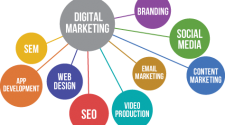Business Intelligence deals with the process of improving or growing a company competitively by the application of data in making decisions. A Business Intelligence platform is usually in the form of a software program or an application that provides assistance to the business management team in increasing the company’s competitive advantage as well as their profitability. A BI tool also helps the company discover which areas they are losing most of their money on and where they can possibly earn more. Let us find out exactly how a BI tool works for your company.
There are actually five principal stages of Business Intelligence:
- Data Sourcing
- Data Analysis
- Situation Awareness
- Risk Assessment
- Decision Support
Let us go through each one.
Data Sourcing
A Business Intelligence tool’s first goal is to gather different information from a number of data sources. These information may be collected from such sources as: photos, tables, schedules, text documents (emails, reports, notebooks, etc.), URL lists and web resources. The main goal of data sourcing is to collect all the relevant information and to collate them in electronic form.
Data Analysis
The next thing that BI aims to do is to apply the gathered data in order to come up with useful information that will benefit the decision making process of the business. This process of data analysis can also be referred to as data mining.
In this stage, the BI tool seeks to identify ongoing market trends, integrate contrasting information, estimate missing information and come up with insights for future trends.
Situation Awareness
The next stage of the BI process involvesremoving all of the unusable and irrelevant information. Once these have been filtered off, the remaining data shall be used to come up with better-informed business decisions and practices. The manager makes use of the useful and relevant data (government policies, competitive advantages, market forces, etc.) to come up with decisions and strategies for the business.
Risk Assessment
In the Risk Assessment stage, the BI tool reveals what possible actions could be taken and what other decisions can be made at varying times. It helps you assess the present as well as the future risk and the cost or the benefit of choosing one course of action over another. In this stage, the tool is helping you come up with your best choices or options at a given time.
Decision Support
In the last stage, the main goal is for the BI tool to provide complete usage of the business data gathered. It warns the company of any newsworthy events such as changes in market trends, any defects, weak staff performance, decreasing production and other matters so that the decision makers can come up with preventive measures.
The BI software also aims to provide the company with the basis to come up with more informed decisions to improve profitability and customer satisfaction. In summary, this stage provides the needed information to the manager at any given moment.
These are the five main stages and tasks of a reliable Business Intelligence Tool. Any business that is serious about gaining some competitive edge and making itself a strong contender in the market should consider implementing one into their system. Not only will it make better-informed members out of your team, it can also pave the way for a better future for your company.
About author
Founder, President, and Principal Consultant of Datamensional, LLC.
Linkedin, Google+, Twitter, Website
Ben has been passionate about providing actionable, relevant, and timely information for decision makers to help them make decisions more quickly and effectively and helping transform organizations as a result. He has been aBusiness Analytics and data guru for nearly 11 years and enjoys seeing thepositive impact an effective solution can have on an organization.
Ben currently leads a team to bring the best practices of Business Analytics as well as hands on implementation to companies big and small. Specialties: Performance Management, Analytics Strategy, System Architecture, Sales Management, Sales Analytics, Marketing Analytics, Business Intelligence, Reporting, Data Integration, IT Management, Data Warehousing, Management Decision Support, Dashboards, KPIs, Automation.
















